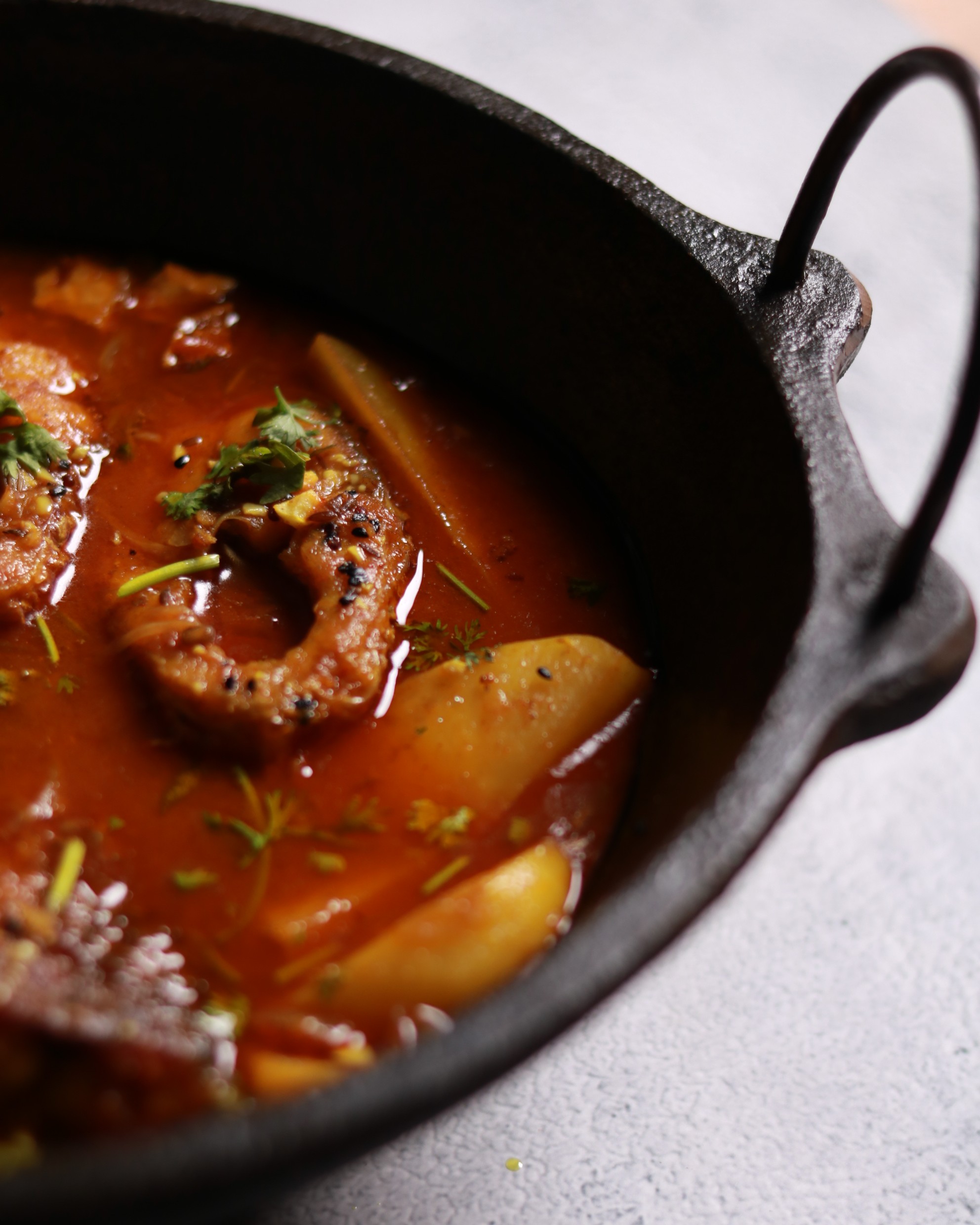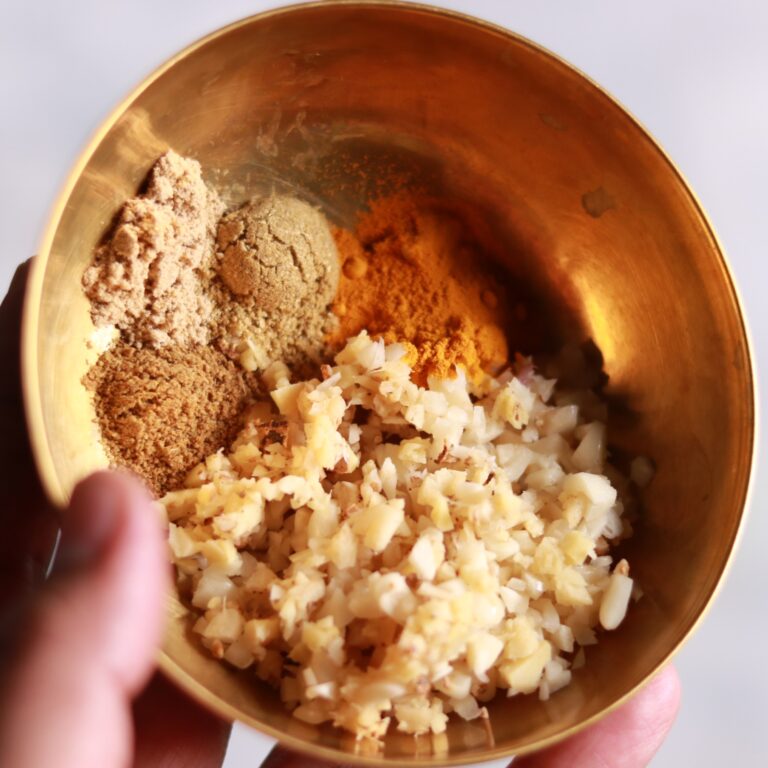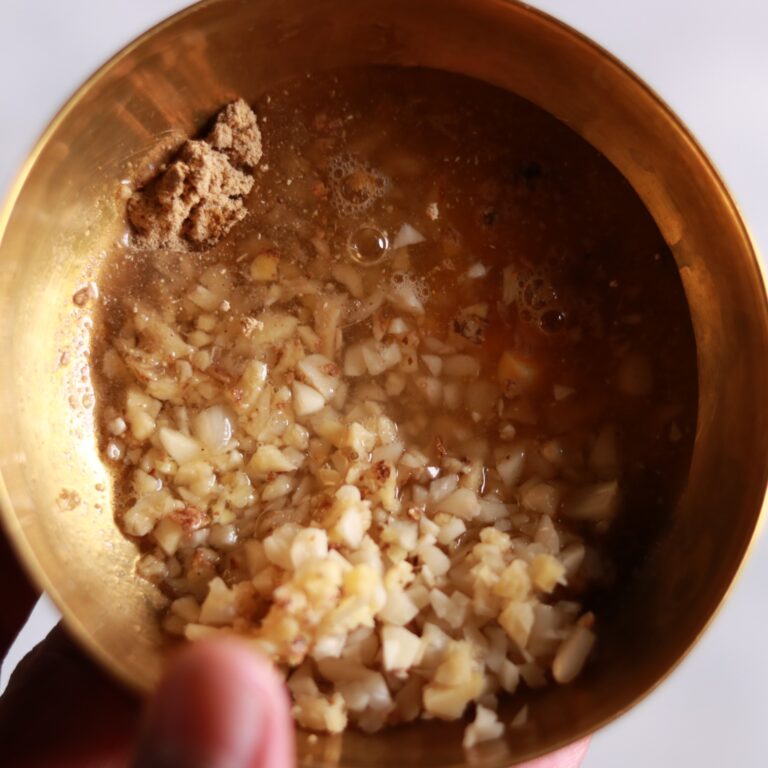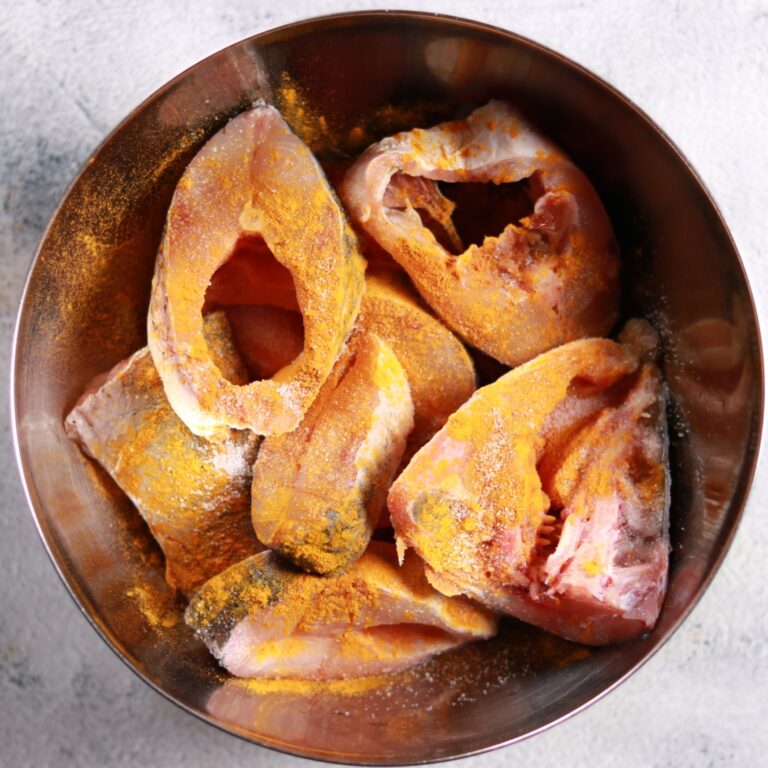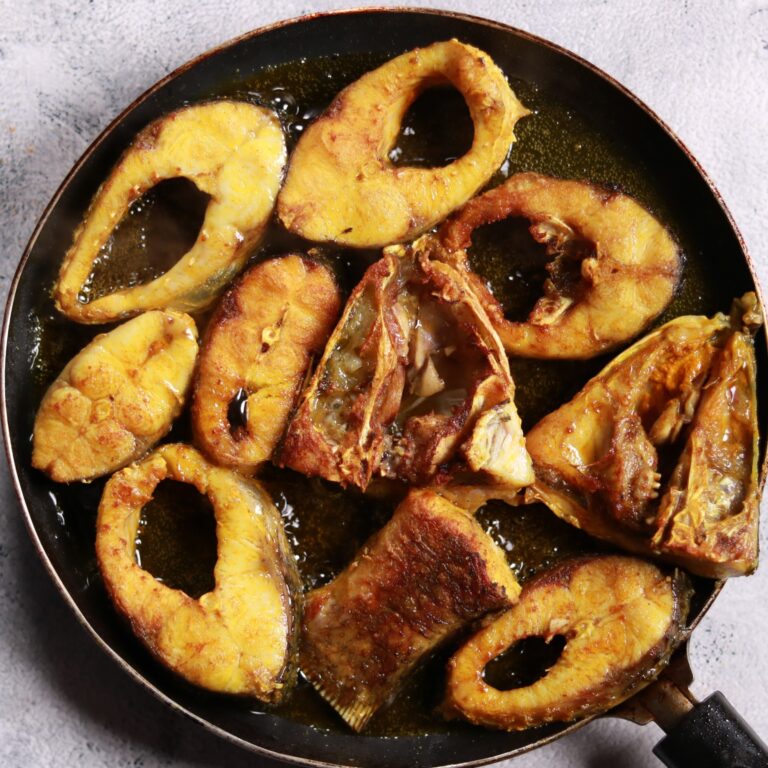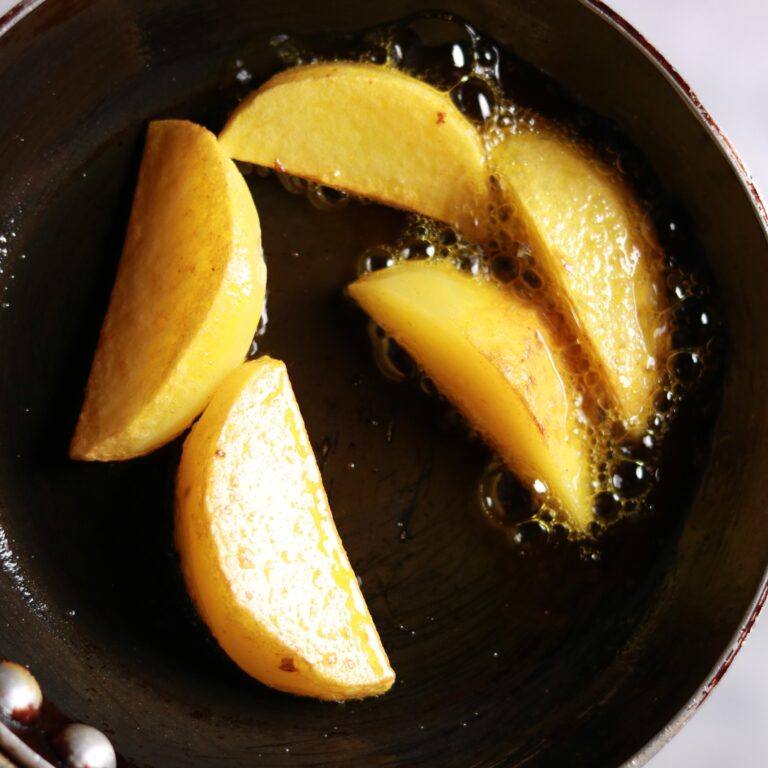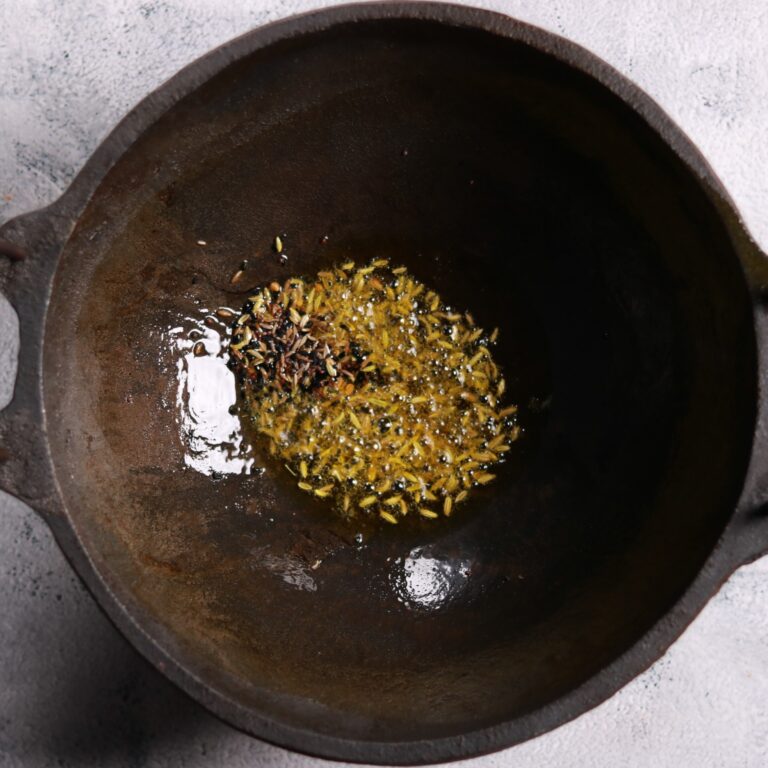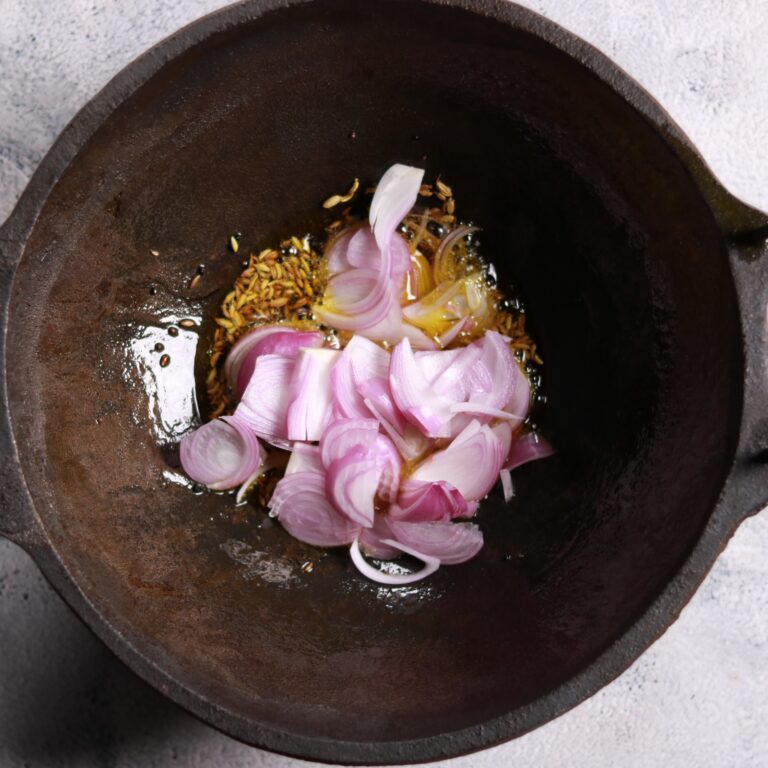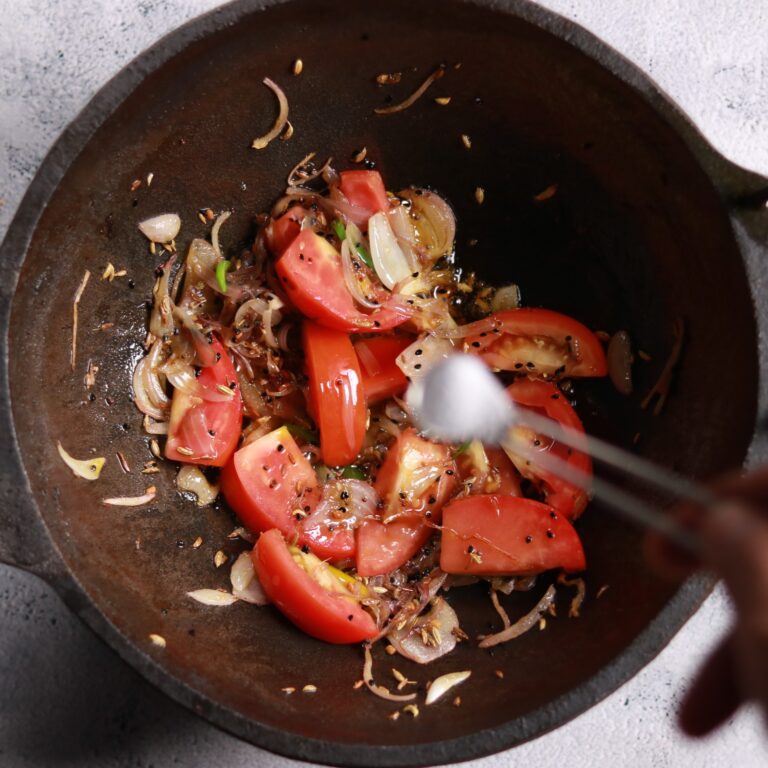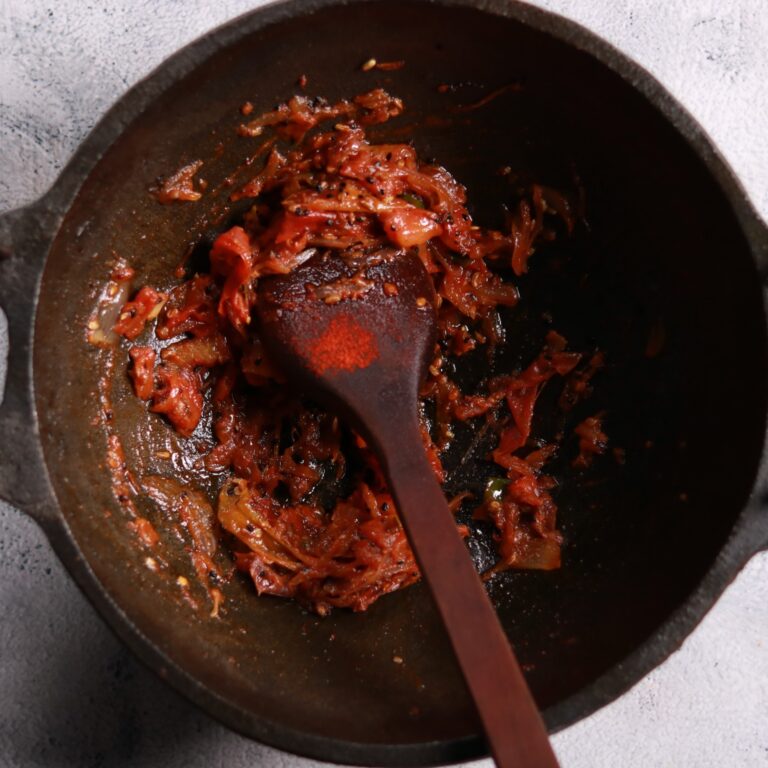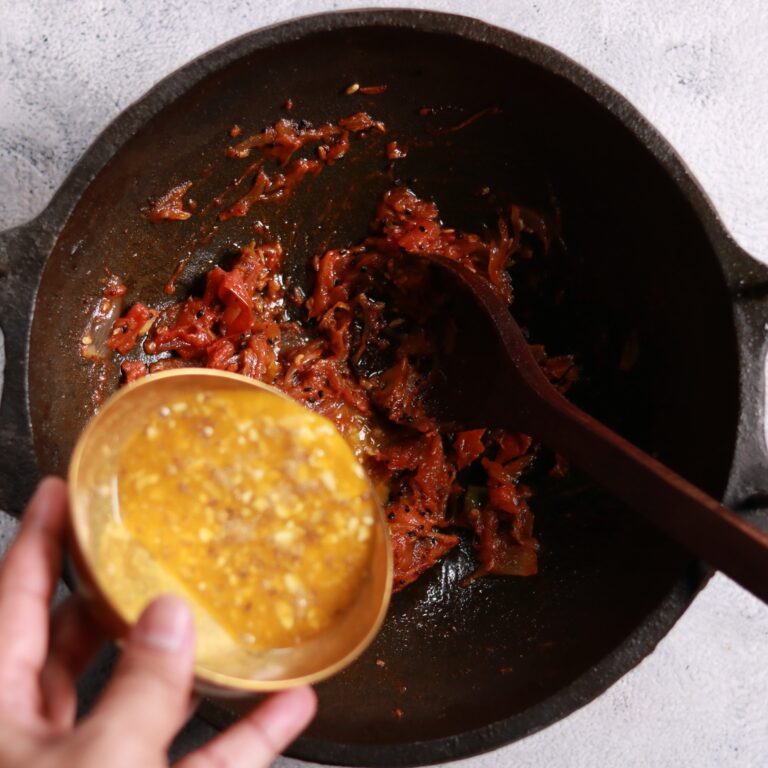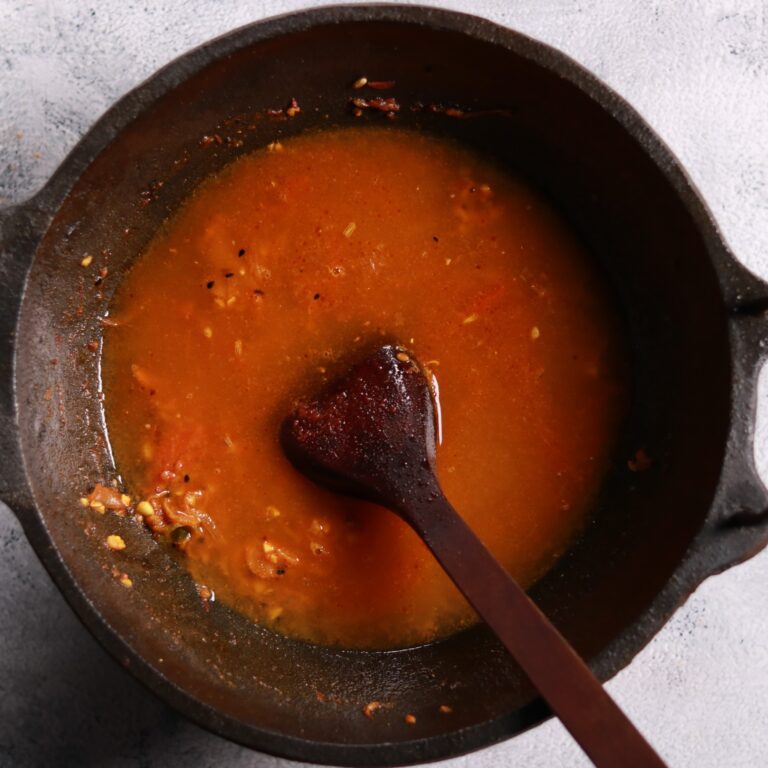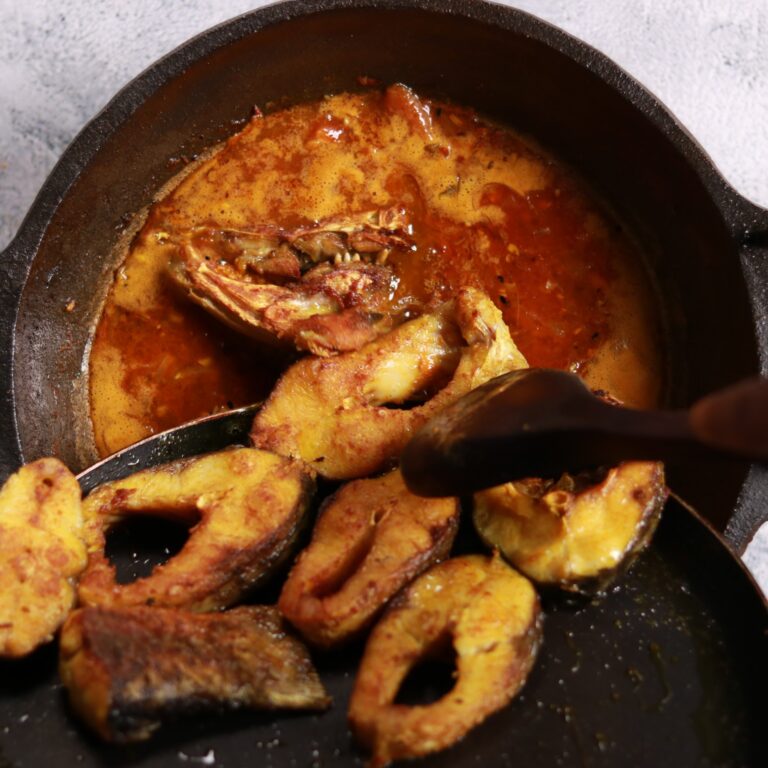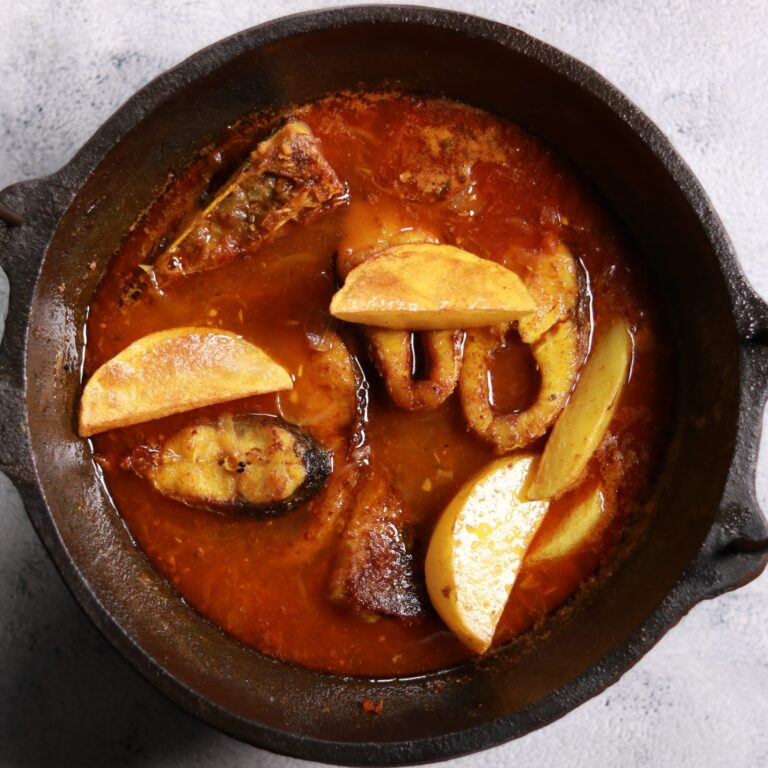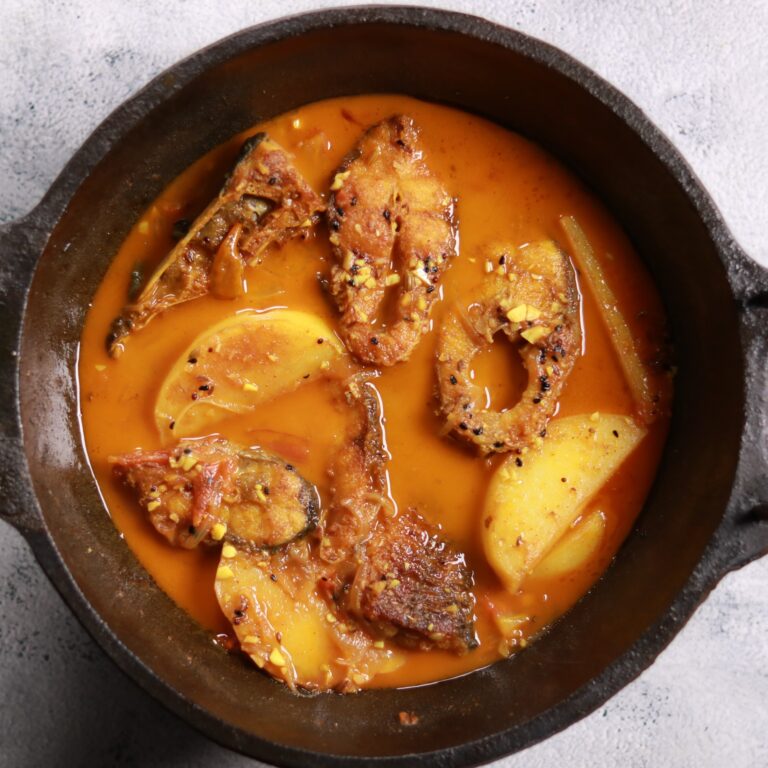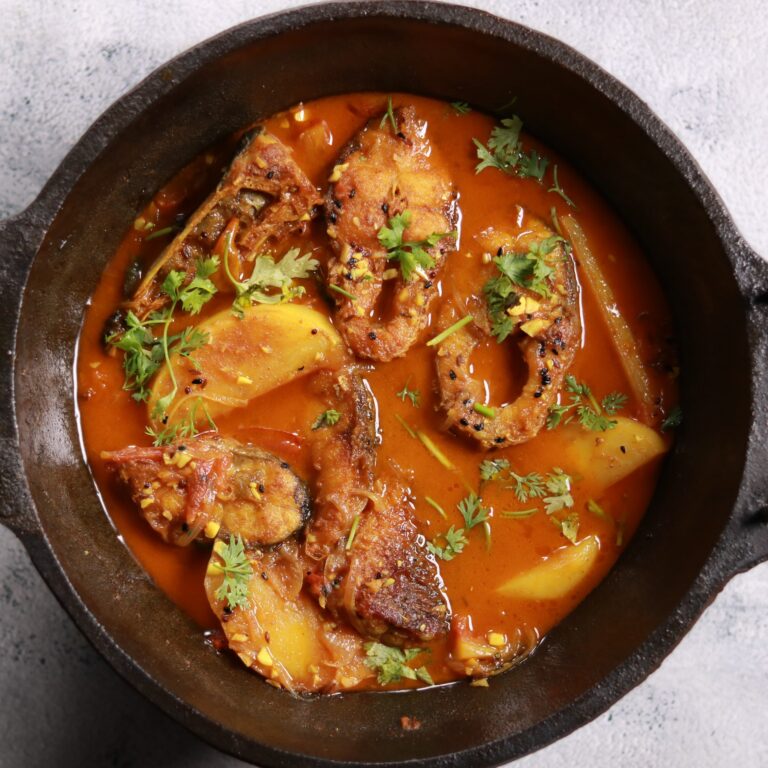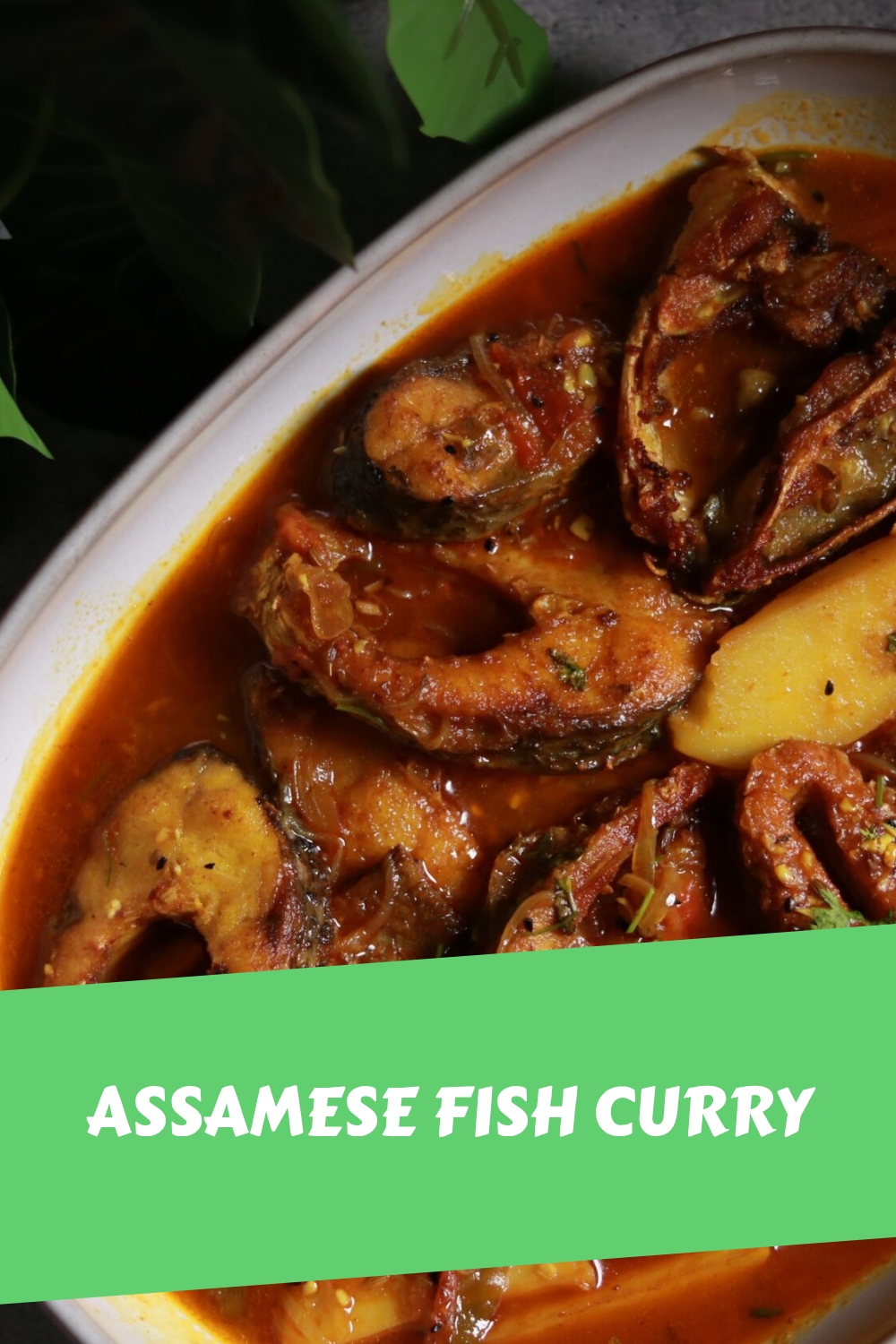There’s something absolutely magical about walking into an Assamese kitchen when Masor Jhol is being prepared. The aroma of mustard oil, fresh fish, and traditional spices creates an atmosphere that’s both homely and exciting. Assamese Fish Curry, known locally as Masor Jhol, isn’t just a dish – it’s a celebration of Assam’s rich river culture and culinary heritage that has nourished families for generations.
What makes this curry so special is how it perfectly captures the essence of Assamese cooking – simple yet sophisticated, using fresh local ingredients to create layers of flavor that are both comforting and complex. Unlike other regional fish curries across India, Masor Jhol has its own distinct personality that reflects the unique geography and culture of northeastern India.
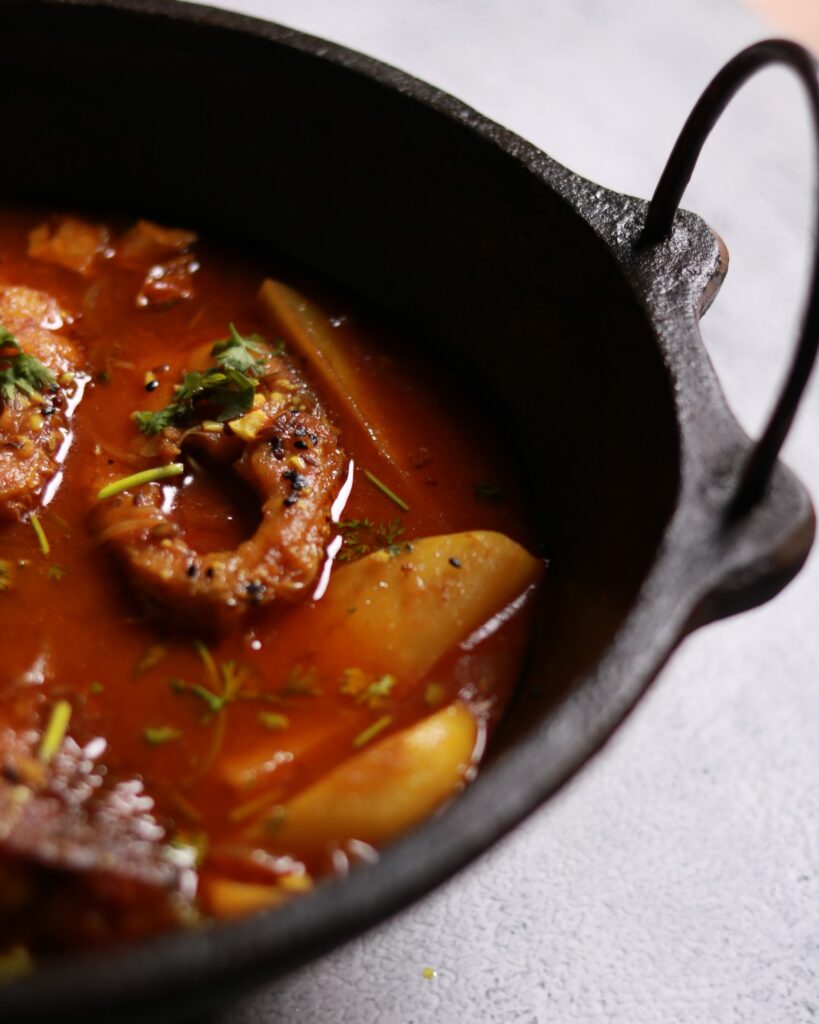
More Fish Curry Recipe
- Authentic Goan Fish Curry Recipe
- Kerala Fish Curry with Coconut Milk (Meen Moilee)
- Macher Jhal Recipe | माछ ऐर झाल: Authentic Bengali Fish Curry
The Heart of Assamese Cuisine
Assamese Fish Curry represents everything beautiful about Assam’s culinary traditions. In this land of mighty rivers like the Brahmaputra, fish have always been central to the local diet, and Masor Jhol showcases this connection beautifully. The curry embodies the Assamese philosophy of cooking letting natural flavours shine through without overwhelming them with excessive spices.
What I absolutely love about this dish is how it brings families together around the dining table. In traditional Assamese homes, making Masor Jhol is often a family affair where recipes are passed down through generations, each cook adding their own little touches while maintaining the authentic essence that makes this curry so beloved.
The beauty of Masor Jhol lies in its versatility and the way it adapts to whatever fresh fish is available, making it a practical yet delicious meal that can be enjoyed any day of the week.
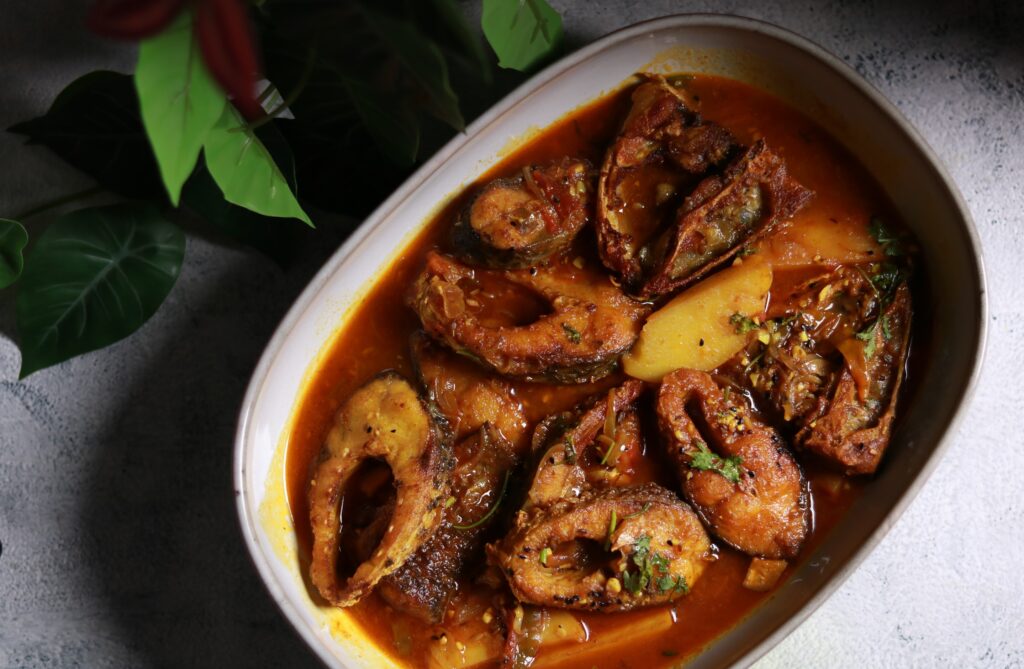
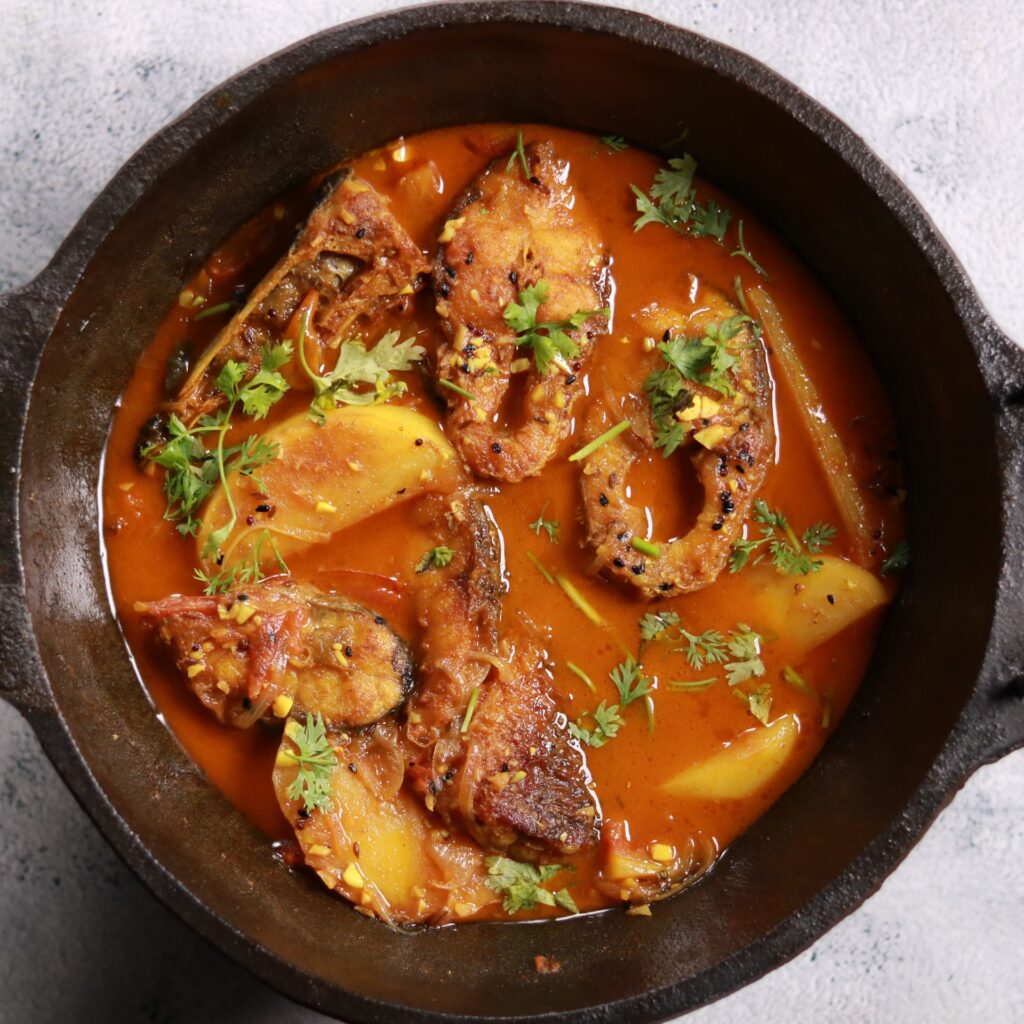
What Makes Masor Jhol Special
Assamese Fish Curry stands apart from other Indian fish preparations through its distinctive flavor profile and cooking techniques. The curry achieves a perfect balance between the robustness of mustard oil and the delicate sweetness of fresh river fish, creating a harmony that’s uniquely Assamese.
The use of panch phoran in this recipe gives the curry its characteristic aroma and taste. This five-spice blend – cumin, black mustard seeds, fennel, nigella, and fenugreek creates a symphony of flavors that’s both complex and comforting. When these spices hit the hot mustard oil, they release their essential oils and create that unmistakable fragrance that defines authentic Masor Jhol.
What’s fascinating is how the curry develops its layers of flavor. The initial frying of fish and potatoes creates a foundation of taste, while the slow-cooked onion and tomato base adds sweetness and acidity. The masala paste brings warmth and depth, and finally, the gentle simmering allows all these elements to meld together into something truly extraordinary.
The texture is equally important the fish should be tender but not falling apart, the potatoes should be creamy inside with a slightly firm exterior, and the gravy should coat everything beautifully without being too thick or too thin.
Essential Ingredients for Authenticity
Every ingredient in Masor Jhol serves a specific purpose, reflecting centuries of Assamese culinary wisdom. The rohu fish is traditional not just because it’s readily available in Assam’s rivers, but because its firm texture and mild flavor make it perfect for absorbing the curry’s complex spices without losing its own character.
Mustard oil is absolutely crucial for authentic flavor – it’s not just a cooking medium but an integral part of the taste profile. When heated properly until it just begins to smoke, the oil transforms from pungent to nutty and sweet, providing the perfect base for building flavors. This technique is fundamental to Assamese cooking and can’t be replicated with other oils.
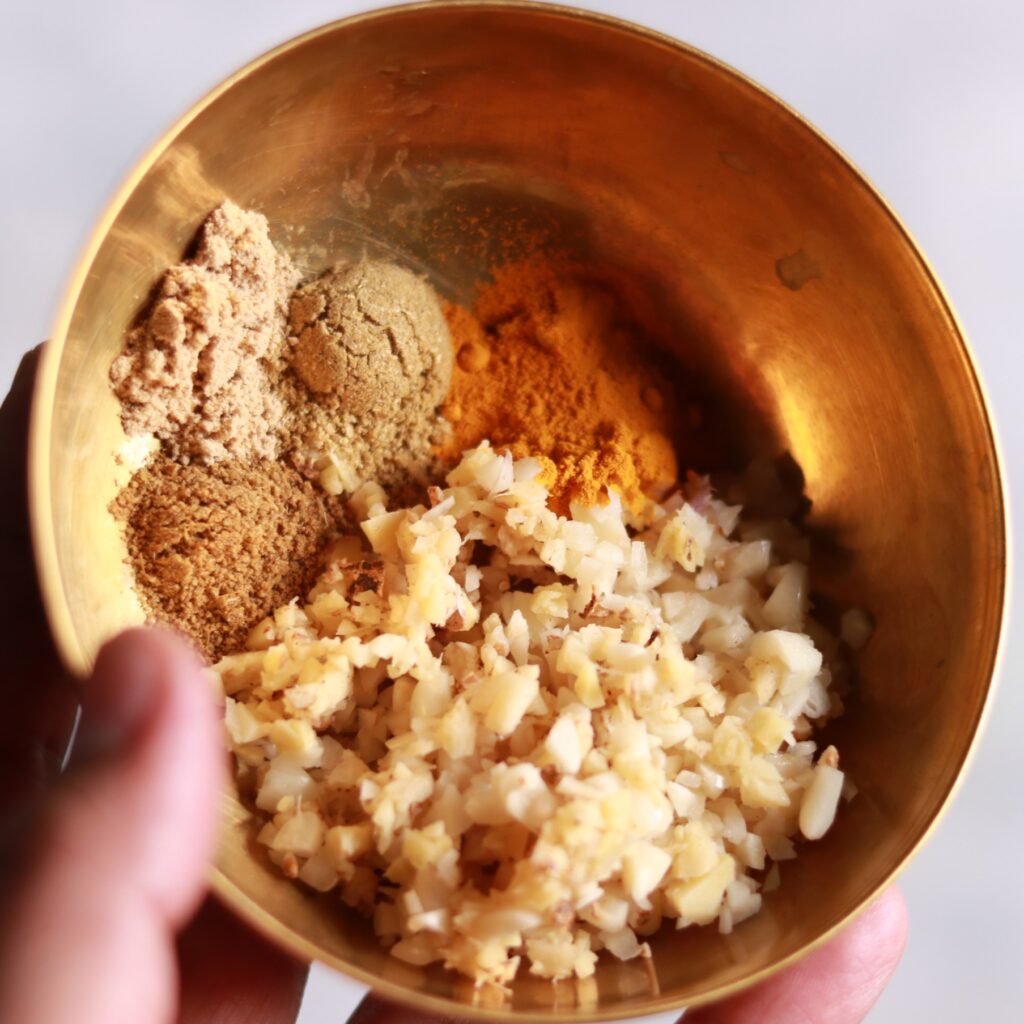
The masala paste combination is particularly important. The ginger-garlic provides warmth and acts as a natural flavor enhancer, while the blend of coriander, cumin, turmeric, and chili powders creates the curry’s characteristic taste. The small amount of hing (asafoetida) might seem insignificant, but it adds a subtle depth that rounds out all the other flavors.
Fresh ingredients like green chilies, onions, and tomatoes provide brightness and acidity that balance the richness of the oil and spices. The potatoes aren’t just filler – they’re traditional and serve to make the meal more substantial while absorbing the curry flavors beautifully.
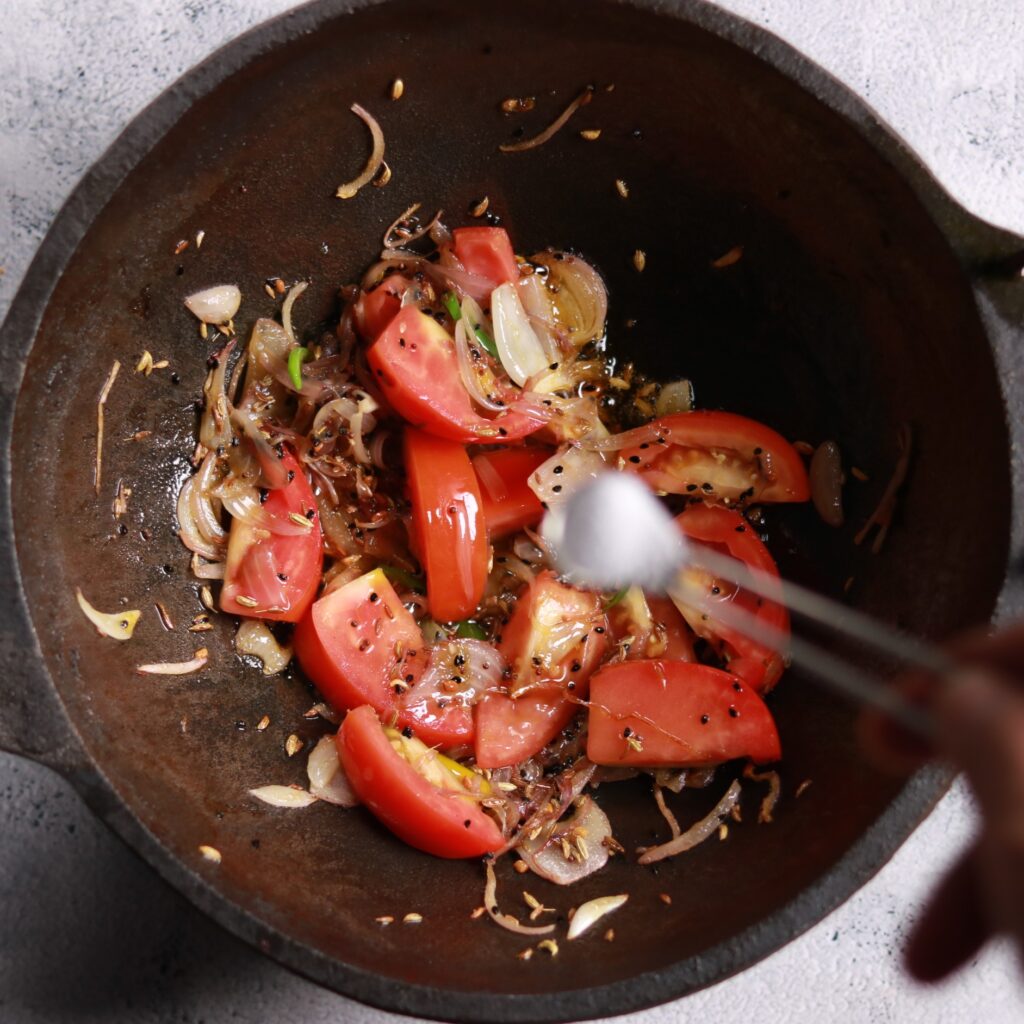
Mastering the Cooking Technique
Creating perfect Assamese Fish Curry is all about understanding the rhythm of cooking and respecting each step of the process. The journey begins with proper fish preparation – marinating with salt and turmeric isn’t just about flavor, it’s about firming up the fish so it maintains its shape during cooking.
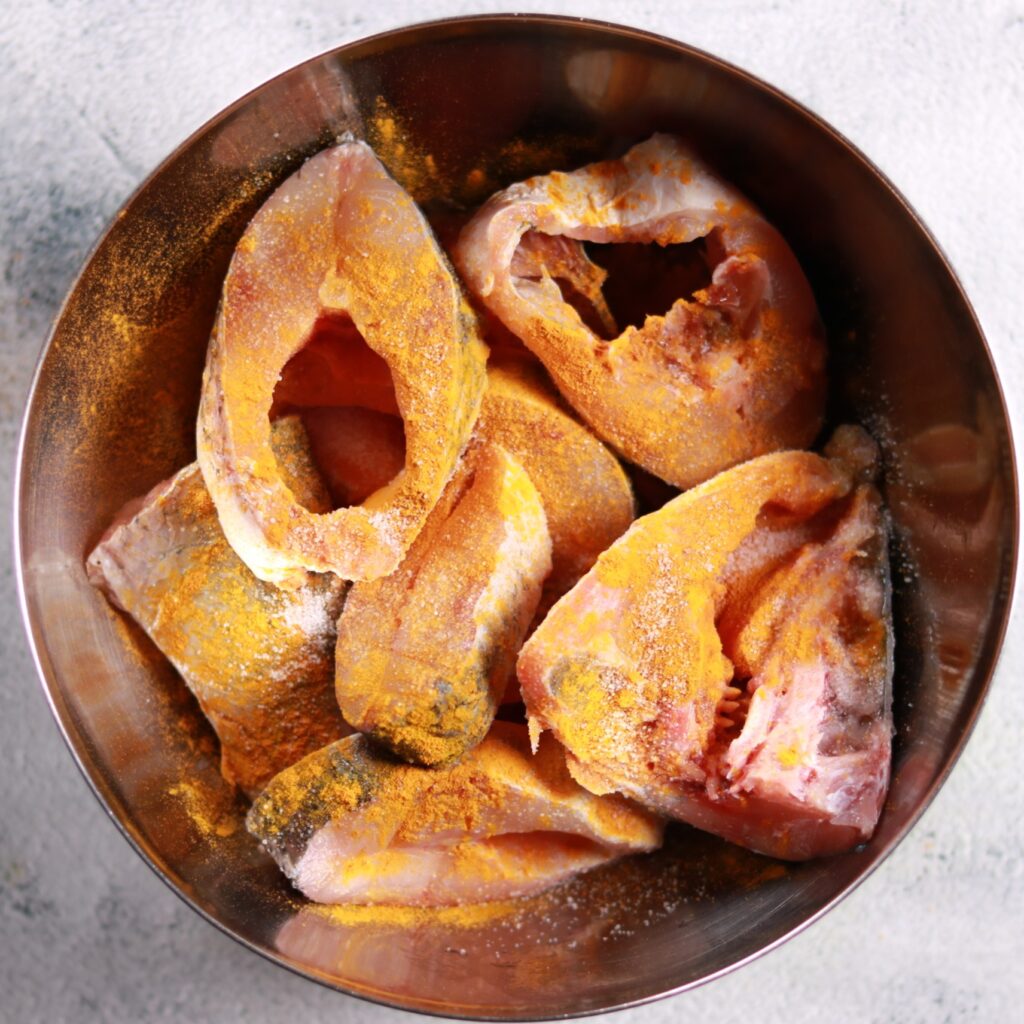
The frying process requires attention and patience. When you fry the marinated fish pieces, you’re creating a protective golden crust that prevents them from breaking apart later. The oil temperature needs to be just right – hot enough to create that beautiful golden color, but not so hot that the outside burns before the inside is properly sealed.
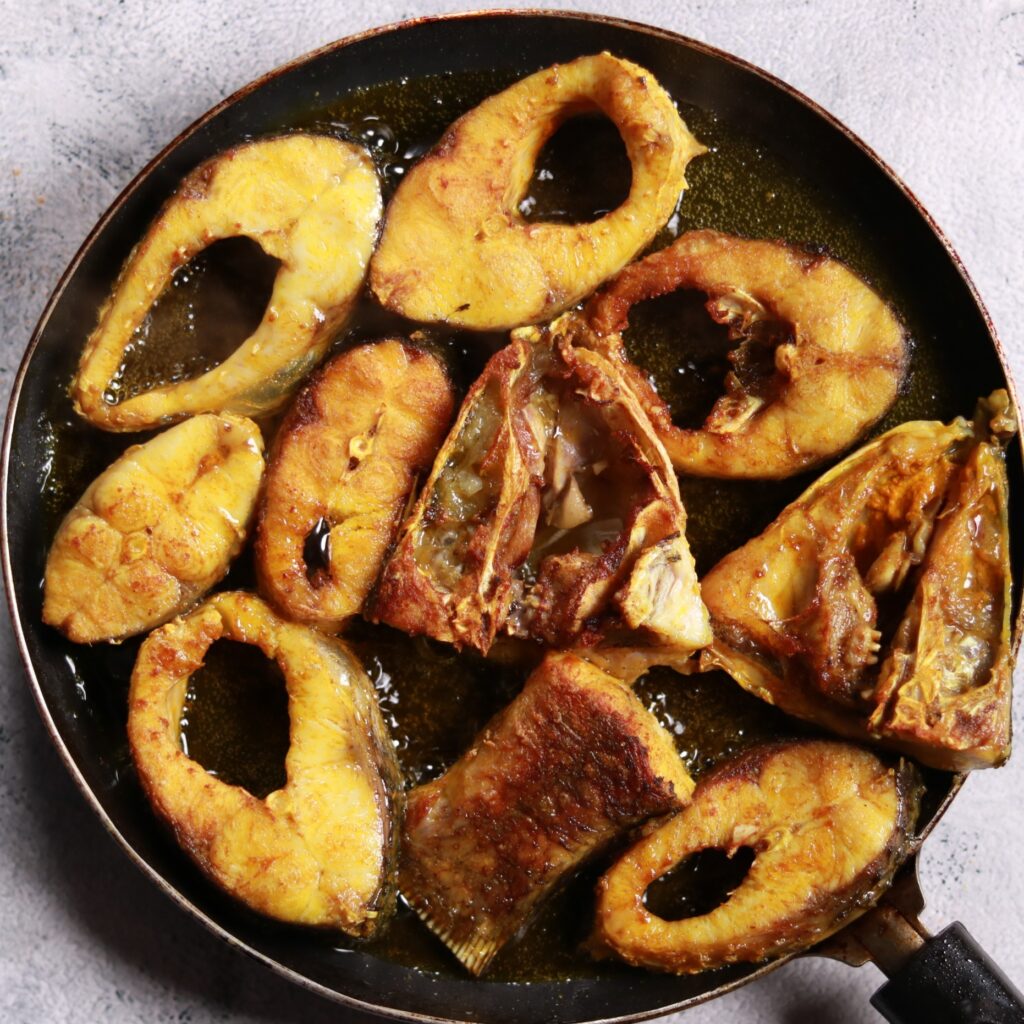
Building the curry base is where the magic really happens. The panch phoran needs to splutter and release its aroma completely before you add the onions. This tempering process is crucial – each spice in the blend needs to bloom properly to contribute its unique flavor to the final dish.
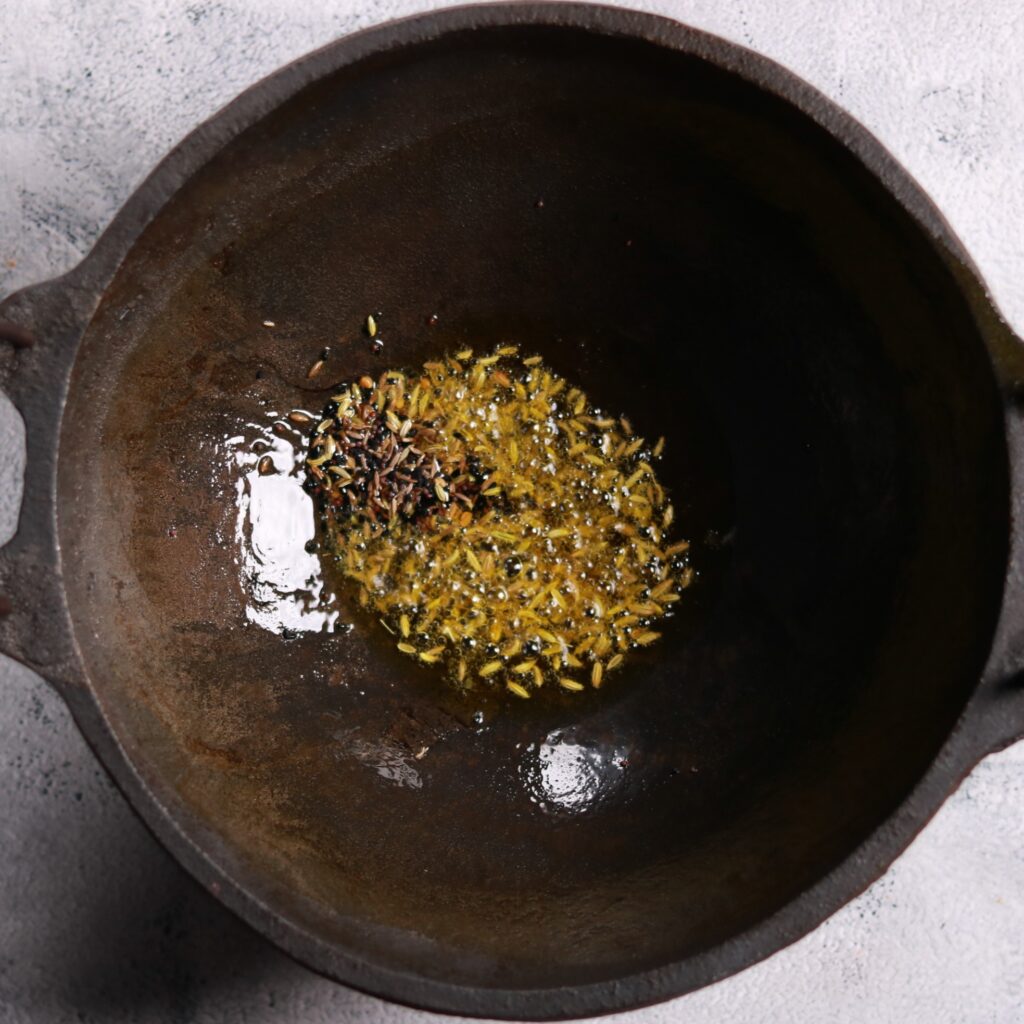
The onion-cooking stage requires patience. They should be golden brown, not just softened, because this caramelization adds sweetness that balances the spices. Similarly, the tomatoes need to be cooked until they’re completely broken down and jammy, which usually takes 5-7 minutes of consistent cooking.
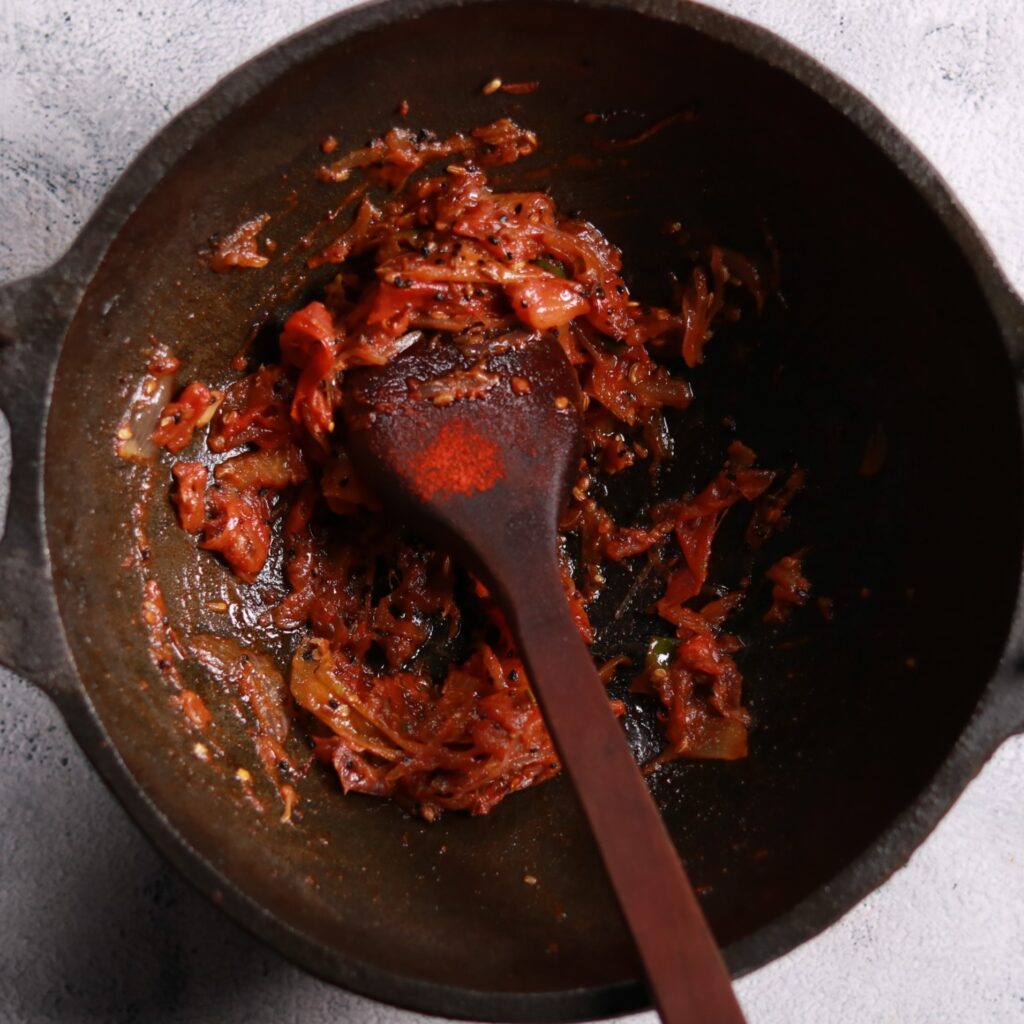
Expert Tips for Perfect Results
After years of making Masor Jhol and learning from experienced Assamese cooks, I’ve discovered several secrets that guarantee success every time. First, the quality of mustard oil makes an enormous difference – always use fresh, good-quality oil and heat it properly to eliminate any harsh flavors.
Temperature control is crucial throughout the cooking process. When adding water to create the curry base, make sure it’s warm – cold water can shock the hot spices and create an unpleasant grainy texture. Add the water gradually while stirring constantly to create a smooth, cohesive gravy.
The simmering stage is where patience really pays off. Once you add the fish and potatoes back to the curry, resist the temptation to stir frequently. Gentle, occasional movement is enough – too much stirring will break the delicate fish pieces. The curry should bubble very gently, creating a slow, even cooking environment.
Timing is everything with the final cooking stage. The fish only needs about 10-15 minutes of gentle simmering to be perfectly cooked. Overcooking will make it tough and dry, while undercooking means it won’t absorb the curry flavors properly. You’ll know it’s ready when the fish flakes easily but still holds its shape.
Assamese Fish Curry – Photo Gallery








Serving and Cultural Context
Assamese Fish Curry is traditionally served with steamed rice, and this pairing is absolutely perfect. The plain rice provides a neutral canvas that allows the complex curry flavors to shine without competition.
The curry actually improves with time, so don’t hesitate to make it ahead. Many Assamese families prefer day-old Masor Jhol because the flavors have had time to meld and intensify. When reheating, do so gently over low heat, adding a splash of warm water if the gravy has thickened too much.
For a complete traditional meal, consider serving it alongside some simple boiled vegetables or a light dal. Assamese cuisine believes in balancing different textures, flavours, and temperatures that complement each other. A small portion of pickled vegetables or fresh salad can add that extra dimension to your meal.
The garnish of fresh coriander leaves isn’t just for appearance, it adds a bright, fresh note that cuts through the richness of the curry beautifully. Always add it just before serving to maintain its vibrant colour and fresh flavour.
Frequently Asked Questions
What’s the difference between Masor Jhol and Bengali fish curry?
While both use similar ingredients, Assamese Masor Jhol has its own distinct spice proportions and cooking techniques that reflect northeastern Indian culinary traditions, creating a unique flavor profile.
Can I substitute the rohu fish with other varieties?
Yes! Catla, pomfret, or any firm white fish works well. The key is choosing fish that won’t break apart easily during cooking and has a mild flavor that absorbs spices well.
Is mustard oil essential for authentic taste?
Mustard oil is crucial for the traditional flavor. While you can substitute with other oils, the taste will be different from authentic Assamese Masor Jhol.
How can I adjust the spice level?
Reduce the green chilies and Kashmiri chili powder according to your preference. The curry should be flavorful without being overwhelmingly hot.
Why do we fry the fish and potatoes separately?
Frying creates a protective crust that prevents breaking during final cooking and adds texture. It also helps ingredients maintain their shape in the finished curry.
How long does the curry stay fresh?
Properly stored in the refrigerator, it stays fresh for 2-3 days. The flavors actually develop and improve over time, making leftovers particularly delicious.
Equipment
- 1 Cast iron pan or heavy-bottomed pan
- 1 Deep frying pan
- 1 Mixing bowls
- 1 Sharp knife
- 1 Cutting board
Ingredients
For Panch Phoran (Bengali Five-Spice Blend)
- 1 tsp Cumin seeds
- ½ tsp Black mustard seeds
- 1 tsp Fennel seeds
- ½ Kalonji nigella seeds
- ¼ tsp Fenugreek seeds
For Fish Marination
- 500 gm Rohu or Catla fish curry cut
- 1 tsp Salt
- 1 tsp Turmeric powder
For Masala Paste
- 2 tbsp Ginger & garlic paste
- ¼ tsp Coriander powder
- ¼ tsp Cumin powder
- ½ Hing asafetida
- ¼ tsp Turmeric powder
- ¼ tsp Kashmiri chilli powder
- 2 tbsp Water
For Curry
- Mustard oil – 4 tbsp
- 1 Large potato – 1 cut into wedges
- 1 Large onion – 1 Sliced
- 1 tsp Ginger & garlic paste – 1 tbsp
- 3 no Green chillies – 3 slit lengthwise
- 1 Large tomato – 1 diced
- Salt – to taste
- ½ tsp Kashmiri red chilli powder – 1/2 tsp
- 3 cups Water – 3 cups
- Fresh coriander leaves – for garnish
Instructions
Prepare the Masala Paste
- Combine the ginger & garlic paste, coriander powder, cumin powder, hing, turmeric, and Kashmiri chilli powder in a bowl.
- Add 2 tbsp water gradually while whisking to create a smooth, lump-free paste.
- Set aside for later use.
Marinate the Fish
- Place fish pieces in a bowl and sprinkle with salt and turmeric powder.
- Gently rub the marinade into each piece, ensuring even coating.
- Let marinate for 15-20 minutes while preparing other ingredients.
Fry the Components
- Heat mustard oil in a cast iron pan over medium-high heat until it begins to smoke slightly.
- Carefully add marinated fish pieces and shallow fry for 2 minutes on each side until golden brown.
- Remove fried fish and place on a plate lined with paper towels.
- Add potato wedges to the same oil and fry until they're golden and tender, about 4-5 minutes.
- Remove potatoes and set aside with the fish.
Build the Curry Base
- Add panch phoran to the remaining oil and let the seeds crackle and release their aroma, about 30 seconds.
- Add sliced onions and sauté until golden brown and fragrant, about 5-6 minutes.
- Add diced tomatoes and cook until they become soft and pulpy, and oil begins to separate, about 5-7 minutes.
- Season with salt and Kashmiri red chilli powder, mixing well.
- Stir in the masala paste and cook for 5 minutes until the raw smell disappears. stirring frequently to prevent sticking.
- Pour in water and bring the mixture to a rolling boil.
- Gently add fried fish
- fried potatoes to the pan.
- Reduce heat to low and simmer for 15 minutes until potatoes are fully cooked and flavors have melded.
- Garnish with fresh coriander leaves and remove from heat.

